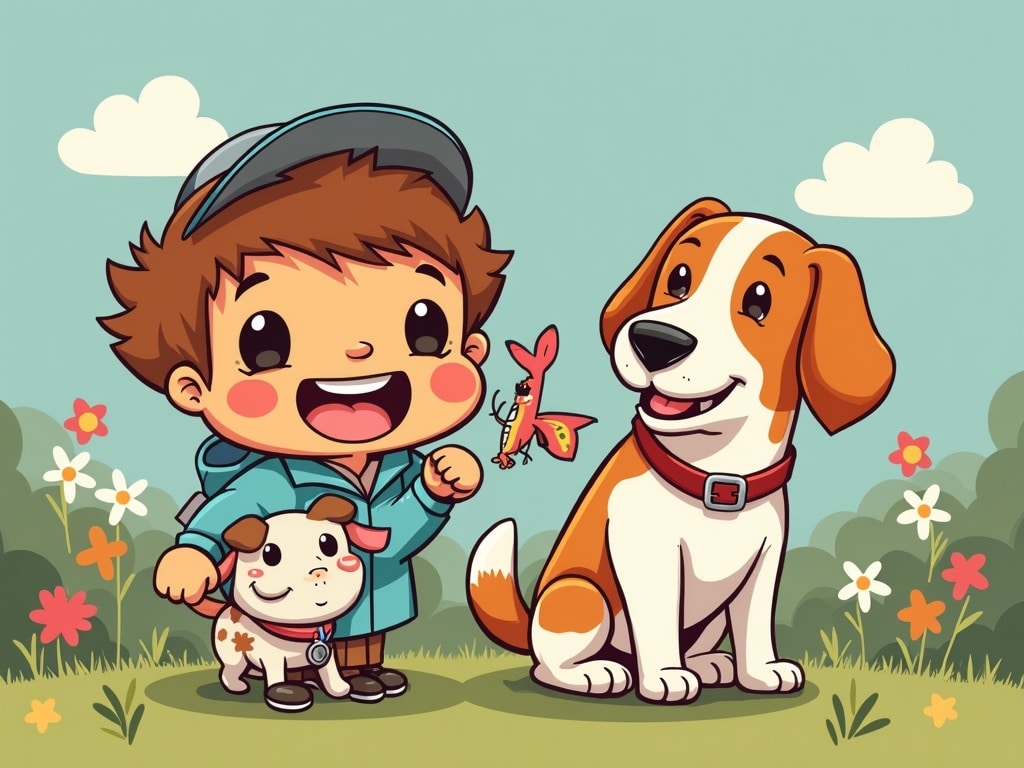Rewarding Rescue: Positive Training That Builds a Lasting Bond
Bringing a rescue dog into your home is an act of incredible kindness, offering a deserving animal a second chance at a loving life. However, it’s also a journey that requires patience, understanding, and the right approach to training. Unlike puppies raised in stable environments, rescue dogs often come with emotional baggage and unknown histories. This is where positive reinforcement rescue dog training shines, offering a humane and effective method to build trust, address behavioral issues, and forge an unbreakable bond.
Understanding the Rescue Dog’s Perspective
Imagine being uprooted from everything you know, placed in unfamiliar surroundings, and expected to trust complete strangers. This is often the reality for rescue dogs. Before you even begin training, it’s crucial to understand the emotional landscape your new companion might be navigating.
- Emotional Baggage: Many rescue dogs have experienced trauma, neglect, or abandonment. This can manifest as anxiety, fear, or distrust. Some may have separation anxiety.
- Common Behavioral Challenges: These can range from excessive barking and chewing to aggression and reactivity towards other animals or people. Some dogs may exhibit resource guarding (protecting food, toys, or space).
- Impact on Learning: A dog riddled with anxiety or fear won’t be receptive to learning. Their past experiences can create deeply ingrained associations that require patience and understanding to overcome.
The Power of Positive Reinforcement
Positive reinforcement training focuses on rewarding desired behaviors to encourage their repetition. It fosters a positive learning environment where the dog feels safe, confident, and motivated to please.
- What it is: Rewarding good behavior with treats, praise, toys, or anything the dog finds motivating. For example, giving a treat when the dog sits on command.
- Core Principles: Consistency, clarity, and positive reinforcement. Communicate clearly what you want, reward desired behaviors immediately, and avoid punishment.
- Why it’s Effective: Builds trust and strengthens the bond between you and your dog. It creates a positive association with training, making the dog more eager to participate.
- Compared to Other Methods: Unlike punishment-based methods, positive reinforcement avoids fear and anxiety, which can hinder learning and damage your relationship with your dog. Punishment can also suppress unwanted behaviors without teaching the dog what *todo instead.
Setting Up a Safe and Comfortable Environment
Your home should be a sanctuary for your rescue dog, a place where they feel safe, secure, and loved.
- Creating a Safe Space: Designate a quiet area, like a crate or a comfortable bed, where the dog can retreat when feeling overwhelmed. Never use this space as punishment.
- Essential Supplies: A comfortable bed, food and water bowls, high-quality dog food, a leash and collar or harness, toys, and cleaning supplies for accidents.
- Introduction to Home and Family: Introduce the dog gradually to each room of the house. Allow them to explore at their own pace. Supervise interactions with children and other pets.
Basic Training Commands Using Positive Reinforcement
Start with the basics and build from there. Keep training sessions short, fun, and positive.
- Sit: Hold a treat in front of the dog’s nose and move it upwards and backwards over their head. As their head goes up, their rear will naturally lower into a sit. Say Sit as they sit, and reward them immediately.
- Stay: Have the dog sit. Hold your hand up in a stop gesture and say Stay. Start with just a few seconds, then gradually increase the duration. Reward them for staying.
- Come: Use a cheerful tone and say Come! When the dog comes to you, reward them enthusiastically with praise and a treat.
- Leave It: Place a treat on the floor and cover it with your hand. If the dog tries to get the treat, say Leave it. When the dog stops trying, remove your hand and give them a different, higher-value treat from your other hand.
- Best Treats and Rewards: Small, soft treats that are highly motivating. Peanut butter (xylitol-free!), cheese, and cooked chicken are often good choices. Use a variety of rewards to keep things interesting.
- Troubleshooting: If the dog is struggling, break the command down into smaller steps. Make sure you are being clear and consistent. If frustration sets in, end the session and try again later.
Addressing Specific Behavioral Issues
Addressing issues like anxiety, fear, aggression, and reactivity requires patience, understanding, and, in some cases, professional help.
- Anxiety: Identify triggers (e.g., loud noises, being left alone). Provide a safe space and use calming techniques like classical music or a calming pheromone diffuser.
- Fear: Desensitize the dog to the source of their fear by gradually exposing them to it in a controlled and positive manner. For example, if the dog fears car rides, start by just sitting in the car with them, then progressing to short drives.
- Aggression: Never punish an aggressive dog. Seek professional help from a certified dog trainer or behaviorist. Management strategies, such as avoiding triggers and using a muzzle in public, are often necessary.
- Reactivity: Reactivity often manifests as barking and lunging on leash. Work on counter-conditioning, associating the trigger (e.g., other dogs) with positive reinforcement.
- Common Triggers: Loud noises, strangers, other animals, being left alone, specific objects.
- When to Seek Professional Help: If you are dealing with aggression, severe anxiety, or any behavioral issue that you are unable to manage on your own, seek professional help from a certified dog trainer or veterinary behaviorist.

Building Trust and Strengthening Your Bond
Training is just one aspect of building a strong bond with your rescue dog. Positive interactions and shared activities are equally important.
- Positive Interactions: Spend quality time with your dog, engaging in activities they enjoy, such as petting, grooming, playing fetch, or going for walks.
- Fun Activities: Puzzle toys, scent work games, and agility training can provide mental and physical stimulation.
- Reading Body Language: Learn to recognize signs of stress, anxiety, and fear. Understanding your dog’s body language will help you respond appropriately to their needs. A tucked tail, whale eye (showing the whites of their eyes), and flattened ears can all be signs of stress.
Socialization Strategies for Rescue Dogs
Socialization is crucial for helping your rescue dog become a well-adjusted member of society, but it must be done safely and gradually.
- Safe Socialization: Start with controlled interactions with calm, well-behaved dogs. Avoid overwhelming environments like dog parks until you are confident in your dog’s ability to handle them.
- Benefits of Socialization: Helps the dog develop confidence, reduces fear and aggression, and allows them to interact appropriately with other dogs and people.
- Gradual Introductions: Introduce your dog to new environments and experiences gradually, allowing them to adjust at their own pace. Positive reinforcement with treats and praise can help create positive associations.
Patience and Consistency: The Keys to Success
Training a rescue dog is a marathon, not a sprint. Patience and consistency are essential for success.
- Importance of Patience and Consistency: Rescue dogs require time to adjust, learn, and trust. Be patient and consistent with your training, and celebrate small victories along the way.
- Managing Expectations: Don’t expect overnight miracles. Focus on progress, not perfection.
- Dealing with Frustration: It’s normal to feel frustrated at times. Take a break, regroup, and remember why you chose to rescue a dog in the first place. Reach out to a trainer or behaviorist for support.
Advanced Training and Enrichment
Once your rescue dog has mastered the basics, you can explore more advanced training techniques and enrichment activities.
- Advanced Training Techniques: Trick training, agility, and scent work can be mentally stimulating and fun for both you and your dog.
- Mental and Physical Stimulation: Puzzle toys, interactive feeders, and regular exercise can help prevent boredom and behavioral problems. Provide plenty of opportunities for your dog to engage in breed-appropriate activities.
- Dog Sports and Activities: Consider trying dog sports like agility, flyball, or dock diving. These activities can provide a fun and challenging outlet for your dog’s energy.
Resources and Support for Rescue Dog Owners
You’re not alone on this journey. Many resources and support networks are available to help you succeed.
- Books and Websites: The Other End of the Leash by Patricia McConnell, Don’t Shoot the Dog! by Karen Pryor, and websites like the ASPCA and the Humane Society offer valuable information and resources.
- Organizations: Local rescue organizations, training clubs, and online forums can provide guidance and support.
- Connecting with Other Rescue Dog Owners: Sharing experiences and advice with other rescue dog owners can be incredibly helpful. Consider joining online forums or local meetups.
Positive reinforcement rescue dog training is more than just teaching commands; it’s about building a lasting bond based on trust, respect, and love. By understanding your rescue dog’s perspective, using positive training methods, and providing a safe and nurturing environment, you can help them overcome their past and embrace a happy, fulfilling future. The rewards of rescuing a dog are immeasurable, and the journey is one you’ll cherish forever.

